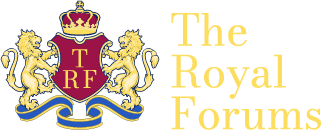Duc_et_Pair
Imperial Majesty
- Joined
- Mar 30, 2014
- Messages
- 13,235
- City
- City
- Country
- Netherlands
There is another painting purchased by (then) Princess Juliana in 1948, called Saint Hubertus in a landscape, by the Flemish master Paul Bril (1554-1626). It was claimed that this was looted from a Jewish owner too.
The commission has investigated this claim as well:
- Professor Dr. R.E.O. Ekkart, former director of the State Agency for Art-historic documentation
- Mrs J.C.E. Belinfante LL.M., director of the Museum of Jewish History in Amsterdam
- Professor Dr. J.P. Sigmond, former director collections of the Rijksmuseum in Amsterdam
The commission concluded that the painting was bought by Princess Juliana from the Netherlands Art Property Foundation, in 1948. Various sources were investigated but no information or insights were found which might lead to a looting, enforced sale or confisquation. Possibly the painting has once been owned by the Jewish Dutch art painter Joseph Henri Gosschalk. The archives give no indication whom owned the painting before the end of 1939 / the begin of 1940. It has become clear that before May 1940 (the start of the Nazi occupation) the painting was owned by a Dutch art trader whom declared that the sale was fully voluntarily. The heirs of Joseph Henri Gosschalk have not laid a claim on the painting.
The bulk of the royal collections predate 1933. Helpful to this was an inventory made by an insurance company which has written in exhausting long lists and into detail every single item in the collection. Thanks to this inventory, the commission could easily rule out all items before 1933 and concentrate on all artworks collectioned after 1933. By the way, the commission wrote that many, many artworks and valuables from the royal family have been looted from the various royal residences in the years 1940-1945. After the Nazi occupation new inventory lists were made of all what was left in the palaces, so that the royal family was able to see what has been stolen during the war years. Understandably between May 1940 and May 1945 (the Nazi occupation) no new items were added to the royal collections.
After ruling out all what has been purchased before 1933 (thanks to the Insurance inventories and the after-WWII inventory) and by ruling out purchases with a clear proof of non-Jewish origin, some 1.300 artworks remained open for furtherer investigation. Every single item has been investigated. By almost everything the Royal House Archives could provide documentation of name, date, price, and details of every purchase (contract, etc).
This is the report (in Dutch): http://www.koninklijkhuis.nl/media/1353955/rapport_herkomstonderzoek_koninklijke_verzamelingen.pdf
The commission has investigated this claim as well:
- Professor Dr. R.E.O. Ekkart, former director of the State Agency for Art-historic documentation
- Mrs J.C.E. Belinfante LL.M., director of the Museum of Jewish History in Amsterdam
- Professor Dr. J.P. Sigmond, former director collections of the Rijksmuseum in Amsterdam
The commission concluded that the painting was bought by Princess Juliana from the Netherlands Art Property Foundation, in 1948. Various sources were investigated but no information or insights were found which might lead to a looting, enforced sale or confisquation. Possibly the painting has once been owned by the Jewish Dutch art painter Joseph Henri Gosschalk. The archives give no indication whom owned the painting before the end of 1939 / the begin of 1940. It has become clear that before May 1940 (the start of the Nazi occupation) the painting was owned by a Dutch art trader whom declared that the sale was fully voluntarily. The heirs of Joseph Henri Gosschalk have not laid a claim on the painting.
The bulk of the royal collections predate 1933. Helpful to this was an inventory made by an insurance company which has written in exhausting long lists and into detail every single item in the collection. Thanks to this inventory, the commission could easily rule out all items before 1933 and concentrate on all artworks collectioned after 1933. By the way, the commission wrote that many, many artworks and valuables from the royal family have been looted from the various royal residences in the years 1940-1945. After the Nazi occupation new inventory lists were made of all what was left in the palaces, so that the royal family was able to see what has been stolen during the war years. Understandably between May 1940 and May 1945 (the Nazi occupation) no new items were added to the royal collections.
After ruling out all what has been purchased before 1933 (thanks to the Insurance inventories and the after-WWII inventory) and by ruling out purchases with a clear proof of non-Jewish origin, some 1.300 artworks remained open for furtherer investigation. Every single item has been investigated. By almost everything the Royal House Archives could provide documentation of name, date, price, and details of every purchase (contract, etc).
This is the report (in Dutch): http://www.koninklijkhuis.nl/media/1353955/rapport_herkomstonderzoek_koninklijke_verzamelingen.pdf
Last edited:


